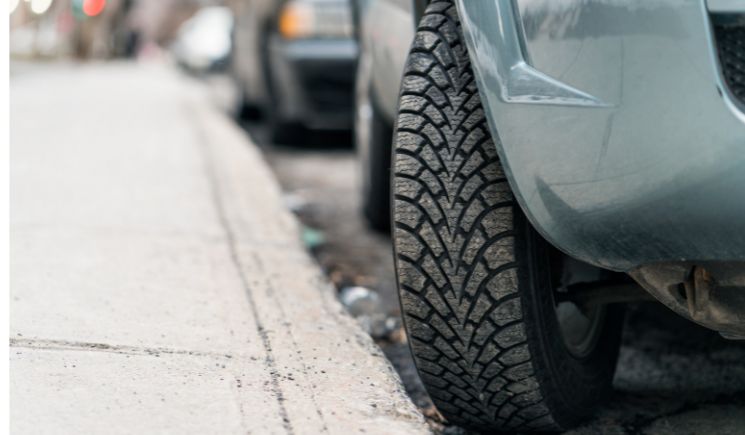Tpms Not Reading One Tire

When your TPMS (Tire Pressure Monitoring System) isn’t reading one of your tires, it can be a frustrating experience.
It can be difficult to determine the cause of the issue and you may not know where to start. This article will cover some common causes for when TPMS isn’t reading one tire so you can get back on the road in no time.
We’ll discuss checking tire pressure, resetting the system, replacing the sensor, and rebalancing the wheels. With this information, you’ll have a better understanding of how to troubleshoot this issue and hopefully find a quick fix!
Table of Contents
- Common Causes of TPMS Not Reading One Tire
- Checking Tire Pressure
- Resetting the System
- Replacing the Sensor
- Rebalancing the Wheels
- Frequently Asked Questions
- Conclusion
Common Causes of TPMS Not Reading One Tire
If you’re wondering why your car’s tire pressure monitoring system isn’t working properly, it could be due to a variety of common causes.
1. Faulty Sensors
Did you know that over 40% of TPMS malfunctions are caused by faulty sensors? That’s right, statistics reveal that these small, integral components are often the culprits behind system errors. If you suspect a sensor issue, it might be wise to get them checked and replaced.
2. Low Tire Pressure
Your tire’s air pressure can also influence the effectiveness of your TPMS. When tires are underinflated, the sensor may struggle to accurately read their pressure. Regularly check your tire’s pressure to prevent this common problem.
3. Sensor Malfunctions
Apart from outright faults, sensors can sometimes malfunction intermittently. This is another common reason why TPMS can act up. If this problem persists, consult a mechanic to diagnose the issue and potentially replace the sensor.
4. Radio Interference
You might be surprised to learn that radio interference from devices such as cell phones can cause inaccurate readings on TPMS systems. This can lead to incorrect pressure readings from just one or multiple tires. Be mindful of the electronic devices you use near your car to avoid such issues.
5. Irregular Tire Pressure Checks
To ensure accuracy with TPMS readings, it’s crucial to check your car’s tires periodically for proper inflation. Regular checks can help prevent TPMS issues and keep your tires at their optimal pressure.
Moving forward, checking tire pressure regularly will help prevent any further issues with your TPMS system.
Checking Tire Pressure

Let’s take a look at the tire pressure to make sure everything is in order.
Checking your tire pressure can be done in four simple steps:
1) Inspecting the tire condition for any cuts, punctures, or air leakage;
2) Re-inflating the tires if they are underinflated;
3) Making sure that all tires have been inflated to their recommended PSI (Pounds per Square Inch);
4) Confirming that each tire has been filled to its proper inflation.
By inspecting and checking your tires for their condition and proper inflation, you can ensure that there is no underlying issue with the TPMS not reading one of the tires. This should help you identify any potential issues with air leakage or low tire inflation which may be causing problems with your TPMS system.
With this knowledge and understanding, you are now ready to move on to resetting the system so it can accurately read each of your tires once again.
Resetting the System
Now that you’ve checked your tires and made sure they’re all properly inflated, it’s time to reset your TPMS so it can get back to accurately reading each of them! Don’t worry if you don’t know what you’re doing – with a few simple steps, you’ll be a TPMS pro in no time.
First, check the battery life of all four sensors. If any have expired batteries or faulty wiring, replace those sensors as soon as possible.
Then make sure that the wheel alignment for each tire is correct; misalignment can cause inaccuracies in the TPMS readings.
Once both of these are completed, use an OBD2 scanner to initiate the sensor reset process and ensure that the system is functioning correctly. With these steps taken care of, you should be good to go—and ready to move on to replacing any faulty sensors.
Replacing the Sensor

Replacing a faulty TPMS sensor can be daunting, but it’s worth the effort to ensure your safety on the road – just think of that peace of mind as a sparkly steering wheel! The cost for a replacement sensor varies depending on tire size and brand, so be sure to factor in any additional costs before making the decision.
It’s also important to keep in mind some maintenance tips; check the pressure regularly, ensure proper installation, and never use an aftermarket sensor.
By following these steps you’ll have peace of mind knowing that your tires are properly monitored at all times. Here are three key points to remember when replacing a TPMS sensor:
- Take into account replacement costs for the correct tire size and brand
- Regularly check pressure levels with accurate equipment
- Never use aftermarket parts or sensors
Making an investment in replacing your TPMS sensor is well-worth it for long-term safety and convenience; but don’t forget about rebalancing your wheels once everything is installed!
Rebalancing the Wheels
After replacing your TPMS sensor, don’t forget to rebalance your wheels for the smoothest ride possible! Rebalancing your wheels is an important part of overall vehicle maintenance and can help extend the life of your tires.
There are three primary components that should be included in a wheel rebalancing: wheel alignment, tire rotation, and tire selection.
Wheel alignment refers to adjusting the angles of the tires so that they make contact with the road as intended. This helps ensure that each tire wears evenly and can improve fuel efficiency.
Tire rotation involves moving all four tires from their current positions so they wear more evenly over time. And finally, selecting a high-quality set of tires will ensure you get optimal performance out of them for longer periods of time.
The table below outlines when these services should be completed:
| Service | Frequency |
|---|---|
| Wheel Alignment | Every 10,000 Miles |
| Tire Rotation | Every 5,000 Miles |
| Tire Selection | As Needed |
Frequently Asked Questions
How often should I check my tire pressure?
“An ounce of prevention is worth a pound of cure.” This proverb could not be truer when it comes to checking your tire pressure regularly. Not only does this help prevent unresponsive tires, but it can also increase the life of your tires by ensuring they are inflated properly and rotated in a timely manner.
It is wise to check your tire pressure at least once a month, especially before long trips or if you notice any difference in road handling or fuel efficiency. Doing so will ensure that all four tires are consistently and correctly inflated, allowing for the greatest mileage from your vehicle and the best driving experience overall.
What should I do if the TPMS light is flashing?
If your tire pressure monitoring system (TPMS) light is flashing, it’s important to take action immediately. This means that one or more of your tires have an air pressure that is lower than the manufacturer’s recommended level.
You should check each tire and add air as needed to bring them back up to the recommended level. It’s also a good idea to check the battery life of the TPMS sensors on each tire, as they may need replacing if they aren’t working properly.
Regularly checking and maintaining proper air pressures in all four tires can help you avoid potential safety hazards while driving, and will also improve fuel efficiency.
Is it necessary to rebalance the wheels after resetting the system?
After resetting your tire pressure monitoring system, it is important to rebalance the wheels for optimal performance. This diagnostic process requires a thorough inspection of all four tires with a tire rotation and pressure gauges.
The anachronism? It’s like playing spin the bottle in reverse – you want to make sure each wheel has the same amount of air! In any case, having your wheels properly balanced ensures that they rotate evenly which helps maintain proper traction on the road. Ultimately, this will keep you safe and sound while driving!
What are the signs that a tire pressure sensor needs to be replaced?
When it comes to tire pressure sensors, the most common sign that one needs to be replaced is if the tire condition itself is compromised. This could be represented by a tear in the sidewall, excessive cracks, or general wear and tear due to age or lack of maintenance.
Additionally, if the tire pressure consistently falls below the manufacturer’s recommended threshold even after being filled with air, this may also indicate that a new sensor is needed. In both cases, replacing the sensor should help restore proper tire pressure readings.
Conclusion
I’ve learned that TPMS not reading one tire can be a common issue. There are several steps to take in order to troubleshoot the problem, such as checking the tire pressure, resetting the system, replacing the sensor and rebalancing the wheels. Interestingly, 80% of vehicles on American roads have incorrectly inflated tires that can lead to poor fuel efficiency and increased risk of accidents.
t’s important to keep an eye on your tire pressure and always make sure it is properly maintained. Taking these precautions will help you stay safe on the road while also saving money on gas!






